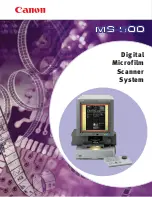Reviews:
No comments
Related manuals for F5-B

STENCIL PRO
Brand: kaarta Pages: 2

XRD9827REF
Brand: Exar Pages: 20

DS-860
Brand: Epson Pages: 70

B813021
Brand: Epson Pages: 11

Microfilm Scanner 400
Brand: Canon Pages: 34

Microfilm Scanner 500
Brand: Canon Pages: 48

LIDE60
Brand: Canon Pages: 2

Microfilm Scanner 300II
Brand: Canon Pages: 6

Microfilm Scanner 300II
Brand: Canon Pages: 54

Microfilm Scanner 350II
Brand: Canon Pages: 4

MS-350
Brand: Canon Pages: 4

Microfilm Scanner 800II
Brand: Canon Pages: 4

MS-500
Brand: Canon Pages: 4

MS-300
Brand: Canon Pages: 4

S 400 MS 500
Brand: Canon Pages: 6

Scanner
Brand: Canon Pages: 4

PR-200S
Brand: Canon Pages: 2

N670U - CanoScan Flatbed Scanner
Brand: Canon Pages: 2

















